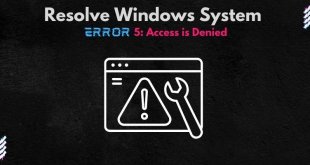In this article, we will discuss why you might want to consider automated regression testing. So keep reading.
Regression testing is a form of testing that is conducted to confirm that any new code changes in a software or application do not affect the existing functionality of the product.
Automated Regression Testing is a form of software testing which uses test cases to be re-implemented so that they may verify whether the previous functionality of the application is working as expected and whether any new changes to the code bring about any new bugs. Automated regression testing can be conducted on the latest builds and even when critical changes in the original working of the application are concerned.
The Need For Regression Testing
- When the code is changed during SDLC
- If the client’s requirement is altered mid-cycle
- When software enhancement is undertaken
- Bug fixing at a speed
How Does Regression Testing Work?
Software maintenance is a type of undertaking that deals with modifications, error corrections, optimization, the inclusion of new features to the software, the omittance of existing features, and unwanted or unexpected errors that may come about due to these demands. And to add to that, testing management tools, like Jira test management tools are used to analyze and record these defects. To bear the brunt of these errors, regression testing is employed to help. The following are a few ways this is used:
Retest All
To check that your code runs properly and without any defects, all the test cases from the entire test suite are re-executed after the update to the software. It is time-consuming and expensive.
Regression Test Selection
Based on the code modification in the module, selective test cases are re-executed from the test suite. Test cases are divided into two categories:
- Reusable test cases: Employed in future regression cycle.
- Obsolete test cases: Not employed in future regression cycle.
Test Case Prioritization
Prioritize the test cases that reply on business impact, crucial & commonly used functionalities. If you select a test case selection based on priority, regression test suites will be considerably decreased.
Hybrid
The hybrid technique is a culmination of Regression Test Selection and Test Case Prioritization. In place of executing all test cases from the test suite, it is better to conduct selected test cases as per their priority.
Types Of Regression Tests
- Unit Regression: Unit Regression is completed during the unit testing stage and code are tested in solitude i.e. any dependencies on the unit to be tested are hindered in order that the unit is often tested separately with no flaws.
- Partial Regression: Partial regression is completed to verify whether the code works precisely even when the changes are wiped out by the code in which the unit is combined with the already existing code.
- Complete Regression: Complete Regression testing is completed when a change within the code is completed on various modules and also if the change impacts in the other module are said to be undetermined. So, the entire product is regressed to see any changes due to the modified code.
Regression Testing vs. Retesting
Re-testing is administered to verify that the test cases that failed within the final execution are passing after fixing the defect. The priority of retesting is above regression testing so it’s administered first. Retesting is planned testing and is completed just for failed test cases. Test cases for retesting can’t be obtained before starting the test.
Regression testing is administered to see whether recent program changes have not adversely affected existing features. It’s not used for defect verification. Regression testing is often administered parallel to retesting. It’s also referred to as genetic testing and is completed for successful test cases.
Automated regression testing is often done, as manual testing might be expensive and time-consuming. It is extremely important for testers because it saves time and creates a specific and efficient end-product. Automation also faces some issues which are listed below.
Limitations Of Automation
Software Test Automation eliminates manual labour, but it needs tons of skilled resources to execute various test scenarios. Companies got to hire software testers having substantial coding skills. There are two sorts of code running simultaneously just in case of automation testing. One is testing code written by testers and therefore the other is application code which is being tested and written by developers. Not to mention the utilization of Jira test management tools to record the test cases too.
If regression testing simply becomes automated, then the entire point of doing it’s going to exhaust. One will find yourself with a transparent software development unknowingly ignoring vast swaths of application. Introducing some amount of manual testing and GUI-based IDEs to the system will take automation to a different level.
 free html design Free html design templates
free html design Free html design templates






